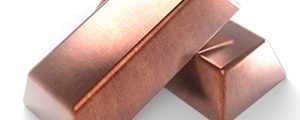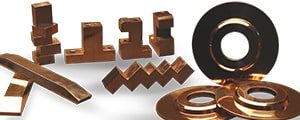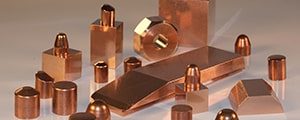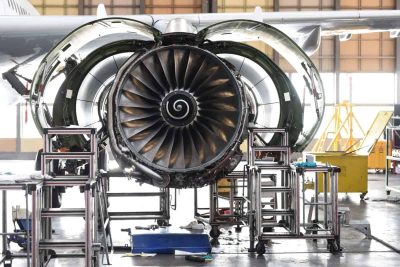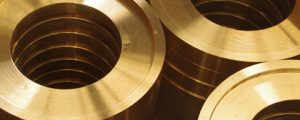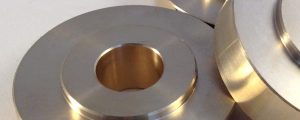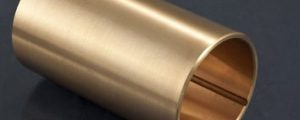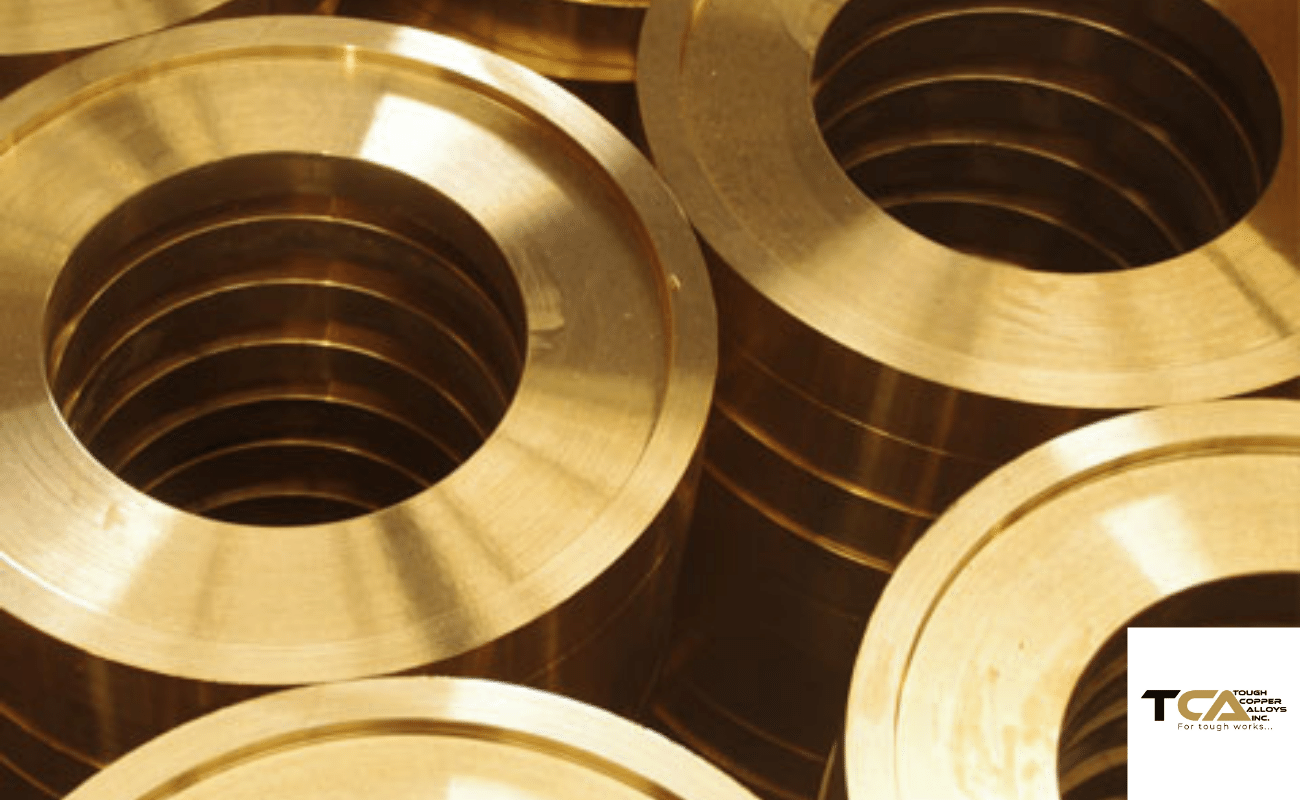What is “C95200” Material?
C95200 is a type of bronze alloy that is composed of copper, aluminum, nickel, iron, and manganese. It is also known as aluminum bronze and is a member of the family of high-strength alloys known as bronzes. The addition of aluminum to the alloy provides C95200 with its unique properties, including excellent corrosion resistance and high strength.
One of the primary advantages of C95200 is its high resistance to corrosion. This alloy has a natural resistance to corrosion and oxidation, which makes it ideal for use in harsh environments like marine applications. The addition of aluminum to the alloy increases its resistance to corrosion even further, making it a popular choice for boat builders and other marine industry professionals who need reliable, long-lasting materials that can withstand the corrosive effects of saltwater and other harsh marine elements.
Another key advantage of C95200 is its high tensile strength. This alloy is incredibly strong and durable, which makes it ideal for use in applications where it will be subjected to heavy loads or stress. The high strength of C95200 also makes it a popular choice for other industries, such as aerospace and defense, where strength and durability are essential.
C95200 is also known for its excellent wear resistance, which makes it ideal for use in applications where the material will be subjected to sliding or abrasive wear. This includes applications like gears, bearings, and other moving parts. The addition of aluminum to the alloy also enhances its resistance to wear, which makes it an even better choice for these types of applications.
In addition to its excellent corrosion resistance, high strength, and wear resistance, C95200 is also a very machinable alloy. This means that it can be easily shaped, drilled, and cut to the desired shape or size, making it a versatile material for a wide range of applications.
Overall, C95200 is a versatile and reliable material that is well-suited for a wide range of applications. Its excellent corrosion resistance, high tensile strength, wear resistance, and machinability make it an ideal choice for marine, aerospace, defense, and other applications where reliability and durability are essential.
Application Areas & Industries
C95200, also known as aluminum bronze, is a high-strength bronze alloy that finds widespread use in various industries. This material possesses remarkable mechanical properties, including excellent corrosion resistance, high tensile strength, and wear resistance, making it an ideal choice for applications requiring durability and reliability. Here are the primary industries and application areas where C95200 is commonly utilized:
Marine Industry: C95200 is commonly employed for manufacturing boat parts exposed to saltwater and other corrosive elements. It includes propellers, valves, shafts, and other components that need to withstand the harsh marine environment. The material’s high corrosion resistance and strength make it a suitable choice for these applications.
Aerospace Industry: C95200 is an excellent choice for applications such as bearings, gears, and other moving parts in the aerospace industry. Its wear resistance and machinability make it an ideal material for these applications where reliability and precision are crucial.
Defense Industry: C95200 is used in various defense industry applications such as tanks, artillery, and other heavy equipment. Its high strength and durability make it a popular choice for these applications where the material needs to withstand extreme conditions and stress.
Construction Industry: C95200 is used in the construction industry for manufacturing architectural features such as sculptures, railings, and decorative hardware. Its unique color and high strength make it an ideal material for these applications.
Automotive, Oil and Gas, and Mining Industries: C95200 finds use in various other industries such as automotive, oil and gas, and mining. In the automotive industry, it is used for engine parts and other components that require high strength and durability. In the oil and gas industry, it is used for valve parts and other equipment that needs to withstand harsh environments. In the mining industry, it is used for conveyor belts and other equipment that require high strength and wear resistance.
In summary, C95200 is a versatile and reliable material that is widely used in various industries. Its exceptional mechanical properties, such as corrosion resistance, high tensile strength, wear resistance, and machinability, make it an ideal choice for applications in marine, aerospace, defense, construction, automotive, oil and gas, and mining industries, among others.
Common Fabrication Processes
C95200, also known as aluminum bronze, is a popular material for various industrial applications due to its excellent mechanical properties. To transform C95200 into a finished product, various fabrication processes can be employed. Here are some of the most common fabrication processes used with C95200:
- Casting: Casting is a common fabrication process used with C95200. It involves pouring molten C95200 into a mold and allowing it to cool and solidify into the desired shape. This process is ideal for creating complex shapes and large parts.
- Extrusion: Extrusion is a process that involves pushing C95200 through a die to create a specific shape or profile. This process is ideal for creating parts with a consistent cross-section and long lengths.
- Forging: Forging involves heating C95200 to a high temperature and then shaping it using a press or hammer. This process can create parts with high strength and excellent grain structure.
- Machining: Machining is a process that involves removing material from C95200 using cutting tools to create the desired shape. This process is ideal for creating precise parts with tight tolerances.
- Welding: Welding is a process that involves joining two or more pieces of C95200 using heat and pressure. This process is ideal for creating large structures or repairing damaged parts.
Overall, C95200 can be fabricated using a variety of processes, each with its own advantages and limitations. Casting, extrusion, forging, machining, and welding are all common processes used to transform C95200 into finished products for various industrial applications. By understanding the strengths and limitations of each fabrication process, manufacturers can create high-quality C95200 products that meet their specific needs.
Chemical Composition
C95200, also known as aluminum bronze, is a high-strength bronze alloy with a unique chemical composition. Its chemical composition includes copper, aluminum, iron, nickel, manganese, and silicon. Copper is the primary component, making up approximately 81% to 87% of the alloy. Aluminum is the second most abundant component, making up approximately 8% to 10% of the alloy. The remaining elements make up the remaining percentage of the alloy.
The table below provides a breakdown of the chemical composition of C95200:
| Element | Percentage Range |
|---|---|
| Copper | 81% – 87% |
| Aluminum | 8% – 10% |
| Iron | 2.0% – 4.0% |
| Nickel | 1.5% – 3.5% |
| Manganese | 1.0% – 3.0% |
| Silicon | 0.20% – 0.80% |
As shown in the table, the exact percentages of each element may vary slightly, but these ranges are typically what are found in C95200. This unique chemical composition gives C95200 its excellent mechanical properties, such as high strength, wear resistance, and corrosion resistance, making it a popular choice for various industrial applications.
Physical Properties
C95200, also known as aluminum bronze, is a high-strength bronze alloy that offers excellent mechanical properties. In addition to its chemical composition, the physical properties of C95200 also contribute to its suitability for various industrial applications.
Density: C95200 has a density of approximately 7.78 g/cm³, which is lower than that of steel but higher than that of aluminum. This makes it a relatively dense material that is ideal for applications that require high mass or weight.
Melting Point: The melting point of C95200 is around 1010°C (1850°F), which is lower than that of steel but higher than that of aluminum. This high melting point makes it suitable for use in applications that require high-temperature resistance.
Thermal Conductivity: C95200 has a high thermal conductivity, which means it can easily transfer heat. This property makes it an ideal material for applications that require efficient heat transfer, such as heat exchangers. Its thermal conductivity is around 37 BTU/(ft·hr·°F).
Electrical Conductivity: C95200 has good electrical conductivity, which makes it suitable for some electrical applications. It has a conductivity of approximately 10-15% IACS (International Annealed Copper Standard).
Magnetic Properties: C95200 is a non-magnetic material, which means it does not have any magnetic properties. This property makes it suitable for applications where magnetic interference needs to be minimized.
Corrosion Resistance: C95200 has excellent corrosion resistance, particularly in saltwater and fresh water environments. This makes it a popular choice for marine applications, such as propellers and ship fittings. It also offers good resistance to stress corrosion cracking and pitting corrosion.
In summary, the physical properties of C95200 make it a versatile and reliable material that is well-suited for a range of industrial applications. Its high strength, excellent corrosion resistance, thermal conductivity, electrical conductivity, non-magnetic properties, and machinability make it a popular choice for applications in marine, aerospace, defense, construction, automotive, oil and gas, and mining industries, among others. If you have any questions about the physical properties of C95200 or its suitability for your specific application, please contact us today.
Here is the chemical composition and physical properties of C95200 in a table format for your convenience:
| Element | Composition |
|---|---|
| Copper | 82.0-86.0% |
| Aluminum | 9.0-11.0% |
| Iron | 2.0-4.0% |
| Nickel | 2.0-4.0% |
| Manganese | 1.0-3.0% |
| Property | Value |
|---|---|
| Density | 7.78 g/cm³ |
| Melting Point | 1010°C (1850°F) |
| Thermal Conductivity | 37 BTU/(ft·hr·°F) |
| Electrical Conductivity | 10-15% IACS |
| Magnetic Properties | Non-magnetic |
| Corrosion Resistance | Excellent in saltwater and fresh water |
Fabrication Properties
C95200, also known as aluminum bronze, is a highly versatile bronze alloy that offers excellent mechanical and physical properties. In addition to its chemical composition and physical properties, the fabrication properties of C95200 are also important factors to consider when using this material for industrial applications. Here are some of its notable fabrication properties:
Weldability: C95200 can be easily welded using most common welding techniques, including gas tungsten arc welding (GTAW), gas metal arc welding (GMAW), and shielded metal arc welding (SMAW). This property makes C95200 an ideal choice for applications that require welding, such as marine hardware and structural components.
Formability: C95200 can be easily formed into a variety of shapes, including plates, sheets, rods, and tubes, using common fabrication methods such as bending, forging, and stamping. This property makes C95200 a popular choice for a wide range of applications, including aerospace, construction, automotive, and mining.
Machinability: C95200 has good machinability, thanks to its low friction coefficient and good chip-breaking ability. This property makes it suitable for applications that require high precision and tight tolerances, such as gears, bearings, and bushings.
Casting properties: C95200 can be easily cast into complex shapes using common casting methods such as sand casting and investment casting. This property makes it a popular choice for applications that require complex shapes, such as pump and valve components.
In summary, the fabrication properties of C95200 make it a highly versatile material that is well-suited for a range of industrial applications. Its excellent weldability, formability, machinability, and casting properties make it a popular choice for applications in marine, aerospace, construction, automotive, oil and gas, and mining industries, among others.
Applicable Specifications
C95200 is a highly sought-after aluminum bronze material known for its excellent corrosion resistance, high strength, and impressive wear resistance. To ensure its proper use, it is important to consider the applicable specifications for this material.
The following are common specifications for C95200:
ASTM B148/B148M: This standard covers the requirements for aluminum bronze alloy castings, including C95200. It specifies the chemical composition, mechanical properties, and testing procedures required to ensure the quality of the material.
AMS 4880: This specification covers the requirements for aluminum bronze castings, including C95200. It provides detailed information on the material’s chemical composition, mechanical properties, testing requirements, and manufacturing processes.
Industry-specific specifications: Different industries and applications may have specific requirements for C95200 beyond the ASTM and AMS specifications. It is important to consult industry-specific standards and regulations to ensure that the material meets the necessary requirements.
Adhering to these specifications is crucial to ensure the quality, reliability, and compatibility of C95200 in various industrial applications. Always consult the appropriate specification before selecting or using C95200 material.
Thermal Properties of “C95200”
C95200, also known as aluminum bronze, is a copper alloy with exceptional thermal properties that make it highly suitable for use in various industrial applications. Some of the thermal properties of C95200 include:
High Thermal Conductivity: With a thermal conductivity of around 50 W/(m·K), C95200 is an excellent heat conductor, making it ideal for use in applications that require efficient heat transfer.
Low Coefficient of Thermal Expansion: C95200 has a relatively low coefficient of thermal expansion, which means it experiences minimal dimensional changes when exposed to temperature variations. This makes it highly suitable for use in applications that require stability and precision.
High Melting Point: C95200 has a high melting point of approximately 1040°C, making it highly resistant to high-temperature environments. This property, combined with its excellent thermal conductivity, makes C95200 an ideal material for use in applications that involve high temperatures.
In conclusion, C95200 is a copper alloy with exceptional thermal properties, including high thermal conductivity, low thermal expansion coefficient, and high melting point. These properties make it highly suitable for use in various industrial applications that require efficient heat transfer, stability, precision, and resistance to high temperatures.
Typical Uses of “C95200”
C95200, also known as aluminum bronze, is a copper alloy that finds extensive use in various industrial applications. Its unique combination of thermal, electrical, mechanical, and corrosion-resistant properties makes it an ideal material for different applications. Here are some typical uses of C95200:
Bearings: C95200 is a popular choice for manufacturing bearings due to its excellent wear and corrosion resistance, along with its ability to withstand heavy loads.
Valves: With its low coefficient of thermal expansion and high thermal conductivity, C95200 is a preferred material for valves that require stability and precision in high-temperature environments.
Heat exchangers: The high thermal conductivity of C95200 makes it a preferred choice for heat exchangers, which are used for transferring heat from one fluid to another in various industrial applications.
Electrical connectors: The high electrical conductivity of C95200 makes it a common material for electrical connectors, which require efficient transmission of electrical current.
Fluid handling equipment: C95200 is frequently used for manufacturing pumps and other fluid handling equipment, thanks to its excellent wear resistance and corrosion resistance in harsh environments.
Welded structural applications: Due to its high strength and toughness, C95200 is an ideal material for use in welded structural applications, such as bridge building and ship construction.
In summary, C95200 is a versatile material with a wide range of applications due to its unique properties. Its exceptional wear and corrosion resistance, along with its high thermal and electrical conductivity, make it an ideal choice for use in various industrial applications.
Equivalents
If you’re considering using C95200 for your industrial application, it’s good to know that there are several equivalent materials available that can be used as alternatives depending on the specific requirements of your project. Here are some commonly used equivalents of C95200:
C95400: This copper-based alloy is a popular replacement for C95200, as it offers similar mechanical and corrosion-resistant properties.
C95900: Another copper-based alloy that is often used as an alternative to C95200, particularly in applications that require higher strength and wear resistance.
C63000: This nickel-aluminum bronze alloy has similar properties to C95200, including high strength, wear resistance, and corrosion resistance.
C48500: A high-strength copper-nickel alloy that is frequently used in marine applications due to its excellent resistance to seawater corrosion.
C83600: This leaded red brass alloy is a suitable alternative in certain applications, as it has similar thermal and mechanical properties to C95200.
C95410: A copper-nickel-tin alloy that is often used as a replacement for C95200 in marine and other high-corrosion applications.
Keep in mind that each of these materials has its own unique properties and characteristics, and the best option will depend on the specific requirements of your project. For expert advice on selecting the most suitable equivalent material for your application, consult with a materials expert or supplier.
Mechanical Properties of “C95200”
C95200 is a copper-nickel-tin alloy that is widely used in various industrial applications due to its unique combination of mechanical, thermal, and electrical properties. Understanding the mechanical properties of C95200 is crucial in determining its suitability for different applications.
The mechanical properties of C95200 include a tensile strength of 70 ksi (480 MPa) and a yield strength of 30 ksi (205 MPa). Its elongation is approximately 10%, and its hardness, Brinell, is 150. The material has a modulus of elasticity of 16,000 ksi (110 GPa) and a Poisson’s ratio of 0.34.
These properties make C95200 a popular choice for applications that require excellent wear resistance, corrosion resistance, and the ability to withstand heavy loads. However, it’s important to note that the mechanical properties of C95200 may vary depending on its composition and processing.
Here is a table summarizing the mechanical properties of C95200:
| Property | Value |
|---|---|
| Tensile strength | 70 ksi (480 MPa) |
| Yield strength | 30 ksi (205 MPa) |
| Elongation | 10% |
| Hardness, Brinell | 150 |
| Modulus of elasticity | 16,000 ksi (110 GPa) |
| Poisson’s ratio | 0.34 |
Consulting with a materials expert or supplier can help determine if C95200 is the right choice for a particular application and ensure that its mechanical properties meet the specific requirements.

